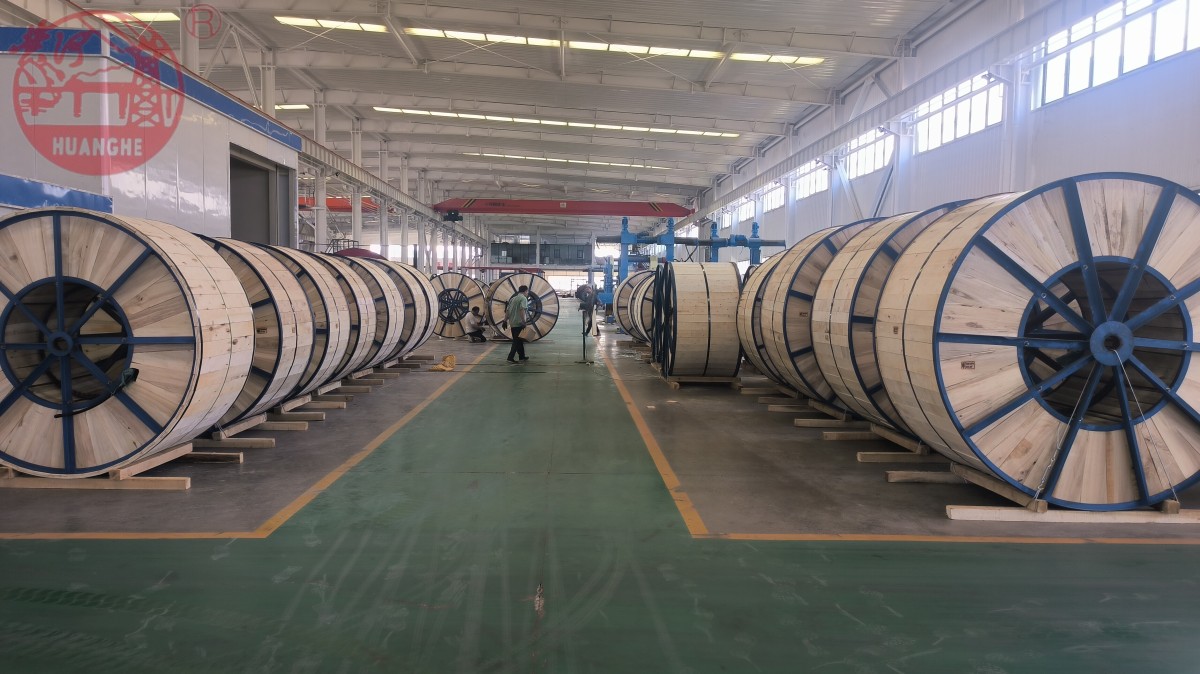News
China, with its vast territory, especially its western and northern regions, experiences long, intensely cold winters. In such harsh conditions, electric wires and cables often face the challenge of insulation and sheath cracking during installation and long-term operation. Although cables are indispensable infrastructure in modern society, there are still areas that need clarification and improvement in current product standards and engineering practices regarding cable performance in low temperatures, installation requirements, and storage and transport specifications.
This article aims to provide detailed recommendations for cable selection and installation in low-temperature environments, based on simulated tests of cable low-temperature performance, combined with relevant standards and practical experience.
1. Common Challenges When Using Cables in Low-Temperature Regions
Cables face several "winter dilemmas" in extremely cold areas:
l Selection Confusion: While various insulation and sheath materials are available for cables, the minimum allowable service temperature is often unclear, leading to uncertainty in design and procurement.
l Installation Difficulties: Existing specifications lack detailed requirements for the minimum cable laying temperature, as well as static and dynamic bending radii. This absence of clear guidance during on-site operations increases the risk of accidental damage.
l Storage and Transportation Hurdles: A lack of clear environmental requirements for cable storage and transportation in low-temperature conditions means cables can be damaged by the cold even before reaching the construction site.

2. Current Cable Product Standards and Construction Specifications for Low-Temperature Use
Despite the common challenges mentioned above, some existing standards and specifications do address low-temperature performance to a certain extent:
l GB/T 12706 (Equivalent to IEC 60502) "Power Cables with Extruded Insulation and Their Accessories for Rated Voltages from 1kV to 35kV": This standard specifies test requirements for cable bending radius and sheath low-temperature performance. However, it does not explicitly define the cable's minimum service temperature or minimum laying temperature.
l GB/T 9330 "Plastic Insulated Control Cables": This standard details requirements for the low-temperature bending, tensile, and impact performance of insulation and sheath, and explicitly states that the cable laying temperature should not be lower than 0℃. It also specifies bending radii: no less than 6 times the cable's outer diameter for unarmored cables, no less than 12 times for armored or shielded cables, and no less than 6 times for flexible shielded cables with shielding structure. However, this standard also does not specify the cable's minimum service temperature.
l GB/T 5023 (Equivalent to IEC 60227) "Polyvinyl Chloride Insulated Cables of Rated Voltages up to and Including 450/750V": This standard covers low-temperature elasticity and impact tests, including low-temperature bending of insulation and sheath, low-temperature tension, and low-temperature impact tests of the finished cable. However, it does not explicitly specify the cable's minimum service temperature or laying temperature, nor the specific allowable bending radius (the latter is covered in engineering construction specifications).
l Provisions in Engineering Design and Construction Specifications:
GB 50168 "Code for Construction and Acceptance of Cable Line Electrical Equipment Installation Engineering":
Minimum Bending Radius: For multi-core unarmored plastic insulated cables, 15D; for single-core, 20D. For multi-core armored cables, 12D; for single-core, 15D (D is the cable outer diameter).
Minimum Cable Laying Temperature: Plastic insulated power cables, 0℃; rubber insulated cables, -15℃; cold-resistant sheath control cables, -20℃; PVC insulated PVC sheathed control cables, -10℃.
Table 6.1.15 Minimum allowable cable laying temperature(GBT50168-PAGE 15)
3. Laying Case Studies and Low-Temperature Test Analysis
To gain a deeper understanding of cable performance in low temperatures, we conducted static and dynamic bending tests under simulated laying conditions.
l Static Bending Test Results: Even ordinary PVC insulated and sheathed cables did not show visible cracking at a low temperature of -40℃ when not subjected to additional impact or dynamic bending stress. This indicates that cables possess a certain degree of low-temperature resistance in a static state. However, this does not imply that such cables are suitable for long-term use or dynamic installation at -40℃, as their material properties become very brittle at this temperature.
l Dynamic Bending Test Results: Ordinary PVC sheathed cables did not crack during dynamic bending at -20℃, while PE sheathed cables did not crack at -40℃. This indicates that, when cables are not subjected to localized concentrated stress or external impact, dynamic bending at normal laying temperatures typically will not cause cable cracking.
l Practical Construction Experience: When the construction temperature falls below the cable's normal laying temperature, if the cable is subjected to localized impact forces (such as collisions or drops onto the ground), insulation and sheath cracking can easily occur, especially for ordinary PVC insulated and sheathed cables, where the risk is particularly significant.

4. Recommendations for Cable Selection and Low-Temperature Installation
Based on the analysis and test results above, we propose the following recommendations for cable selection and installation in low-temperature environments:
4.1 Cable Type Selection and Usage Recommendations
l Ordinary PVC Sheathed Cables: Suitable for use in areas above -20℃. According to Chinese national standards and practical experience, the installation temperature for these cables is recommended to be no lower than 0℃. Under specific, controlled construction conditions with no risk of stress damage, installation may be feasible down to -5℃. Insulation materials can include PVC, PE, XLPE, etc. If installation at lower temperatures is required, cold-resistant materials must be chosen.
l For Use in Areas Above -30℃: For ordinary plastic insulated power cables, PE sheathed cables are recommended, with an installation temperature of no less than -5℃. Alternatively, you can choose rubber insulated cold-resistant PVC sheathed or nitrile composite sheathed cables. The installation temperature for these cables can be lowered to no less than -15℃.
l For Use in Areas Below -30℃: For ordinary plastic insulated power cables, PE sheathed cables must be selected. Their installation temperature is recommended to be no less than -5℃.
4.2 Laying and Construction Notes
Temperature Control: The installation temperature for ordinary PVC insulated and sheathed cables should be kept above 0℃/-5℃.
Cold-Resistant Cables: The installation temperature for rubber insulated cold-resistant PVC sheathed or nitrile composite sheathed cables should be kept above -15℃.
Low-Temperature Preheating: In special cases, when cables must be laid below the recommended temperature, they should be pre-heated before construction and laid within 1 hour after treatment.
Avoid Stress: During low-temperature installation, particular attention should be paid to controlling the cable's bending radius, slope, and other areas prone to stress, taking measures to prevent cable cracking due to excessive force.
Storage and Transport Protection: During low-temperature storage and transportation, collisions, drops to the ground, and other external impacts should be avoided to prevent hidden damage to the cables.
For reference, the maximum operating temperature of the cable conductor is shared below: (GB/T12706.1 (equivalent to IEC60502-1), Page 4). Please note: the maximum operating temperature here is a different concept from the minimum service/laying temperatures discussed in this article.

